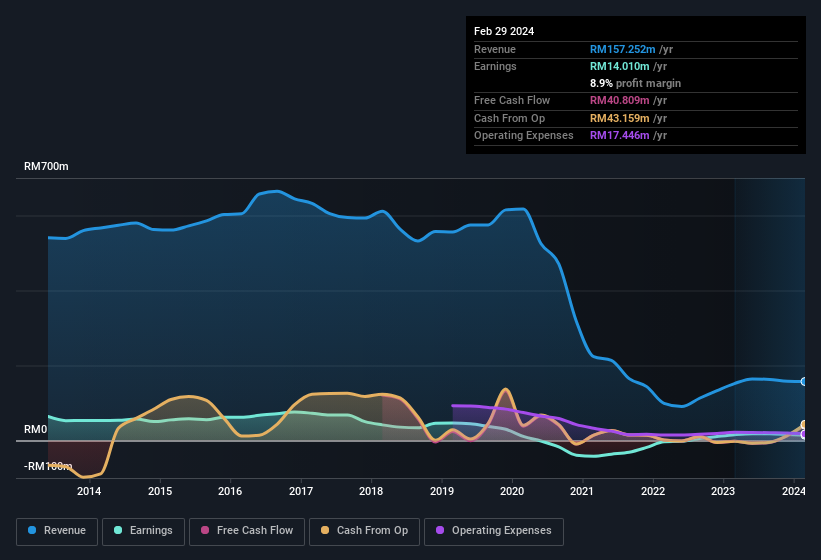- Singapore
- /
- Specialty Stores
- /
- SGX:5SO
There May Be Some Bright Spots In Duty Free International's (SGX:5SO) Earnings
The market was pleased with the recent earnings report from Duty Free International Limited (SGX:5SO), despite the profit numbers being soft. However, we think the company is showing some signs that things are more promising than they seem.
See our latest analysis for Duty Free International

A Closer Look At Duty Free International's Earnings
As finance nerds would already know, the accrual ratio from cashflow is a key measure for assessing how well a company's free cash flow (FCF) matches its profit. In plain english, this ratio subtracts FCF from net profit, and divides that number by the company's average operating assets over that period. You could think of the accrual ratio from cashflow as the 'non-FCF profit ratio'.
As a result, a negative accrual ratio is a positive for the company, and a positive accrual ratio is a negative. That is not intended to imply we should worry about a positive accrual ratio, but it's worth noting where the accrual ratio is rather high. That's because some academic studies have suggested that high accruals ratios tend to lead to lower profit or less profit growth.
Over the twelve months to February 2024, Duty Free International recorded an accrual ratio of -0.15. That indicates that its free cash flow quite significantly exceeded its statutory profit. To wit, it produced free cash flow of RM41m during the period, dwarfing its reported profit of RM14.0m. Given that Duty Free International had negative free cash flow in the prior corresponding period, the trailing twelve month resul of RM41m would seem to be a step in the right direction.
Note: we always recommend investors check balance sheet strength. Click here to be taken to our balance sheet analysis of Duty Free International.
Our Take On Duty Free International's Profit Performance
As we discussed above, Duty Free International has perfectly satisfactory free cash flow relative to profit. Because of this, we think Duty Free International's earnings potential is at least as good as it seems, and maybe even better! Unfortunately, though, its earnings per share actually fell back over the last year. Of course, we've only just scratched the surface when it comes to analysing its earnings; one could also consider margins, forecast growth, and return on investment, among other factors. If you want to do dive deeper into Duty Free International, you'd also look into what risks it is currently facing. Our analysis shows 3 warning signs for Duty Free International (1 is a bit concerning!) and we strongly recommend you look at them before investing.
This note has only looked at a single factor that sheds light on the nature of Duty Free International's profit. But there is always more to discover if you are capable of focussing your mind on minutiae. Some people consider a high return on equity to be a good sign of a quality business. So you may wish to see this free collection of companies boasting high return on equity, or this list of stocks that insiders are buying.
New: Manage All Your Stock Portfolios in One Place
We've created the ultimate portfolio companion for stock investors, and it's free.
• Connect an unlimited number of Portfolios and see your total in one currency
• Be alerted to new Warning Signs or Risks via email or mobile
• Track the Fair Value of your stocks
Have feedback on this article? Concerned about the content? Get in touch with us directly. Alternatively, email editorial-team (at) simplywallst.com.
This article by Simply Wall St is general in nature. We provide commentary based on historical data and analyst forecasts only using an unbiased methodology and our articles are not intended to be financial advice. It does not constitute a recommendation to buy or sell any stock, and does not take account of your objectives, or your financial situation. We aim to bring you long-term focused analysis driven by fundamental data. Note that our analysis may not factor in the latest price-sensitive company announcements or qualitative material. Simply Wall St has no position in any stocks mentioned.
About SGX:5SO
Duty Free International
An investment holding company, operates as a duty-free retailer under the Zon brand in Malaysia.
Flawless balance sheet and good value.
Market Insights
Community Narratives




